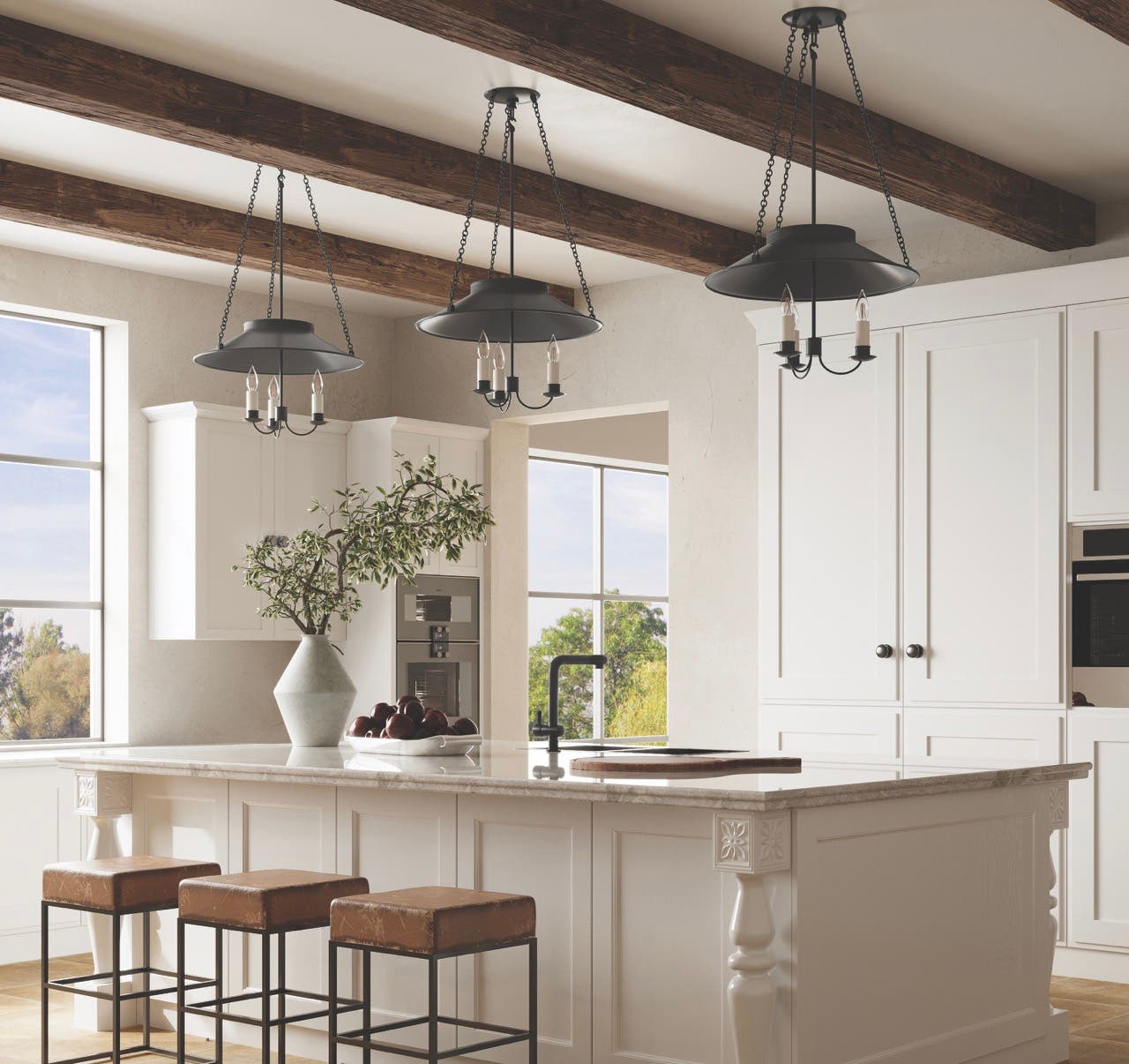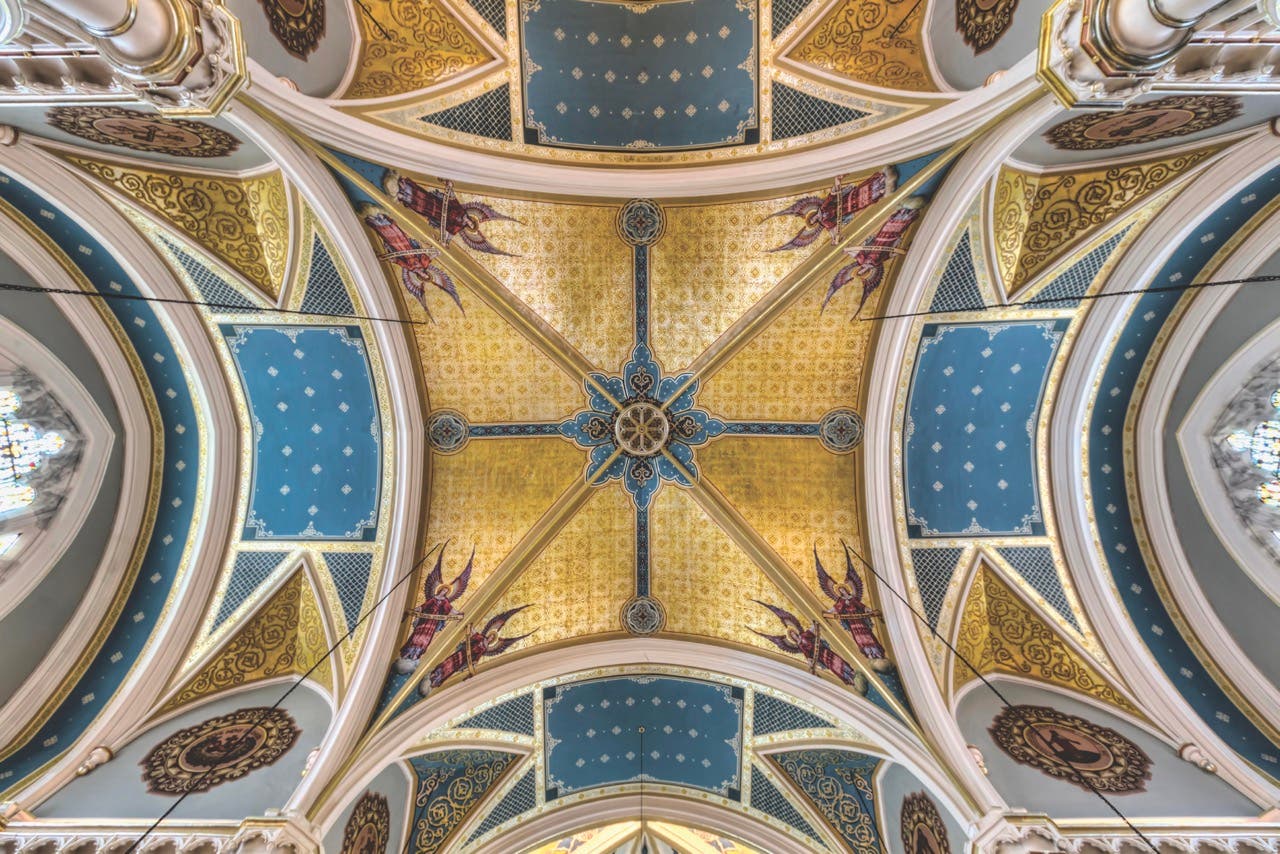
Product Reports
Decorative Arts
Whether it’s recreating artwork for a restoration project or designing new pictorial imagery for a historic building, decorative painting is what brings the project to full-color life.
It takes teams of skilled craftspeople, many of whom are trained to meld old-world skills with the latest technology, to execute the timeless designs that will enchant generations of viewers.
Here are profiles of some of the top practitioners in the field.
Conrad Schmitt Studios
For more than a century, Conrad Schmitt Studios has advanced the tradition of excellence in artistry and craftsmanship, transforming thousands of churches, theaters, courthouses, and state capitols throughout the country.
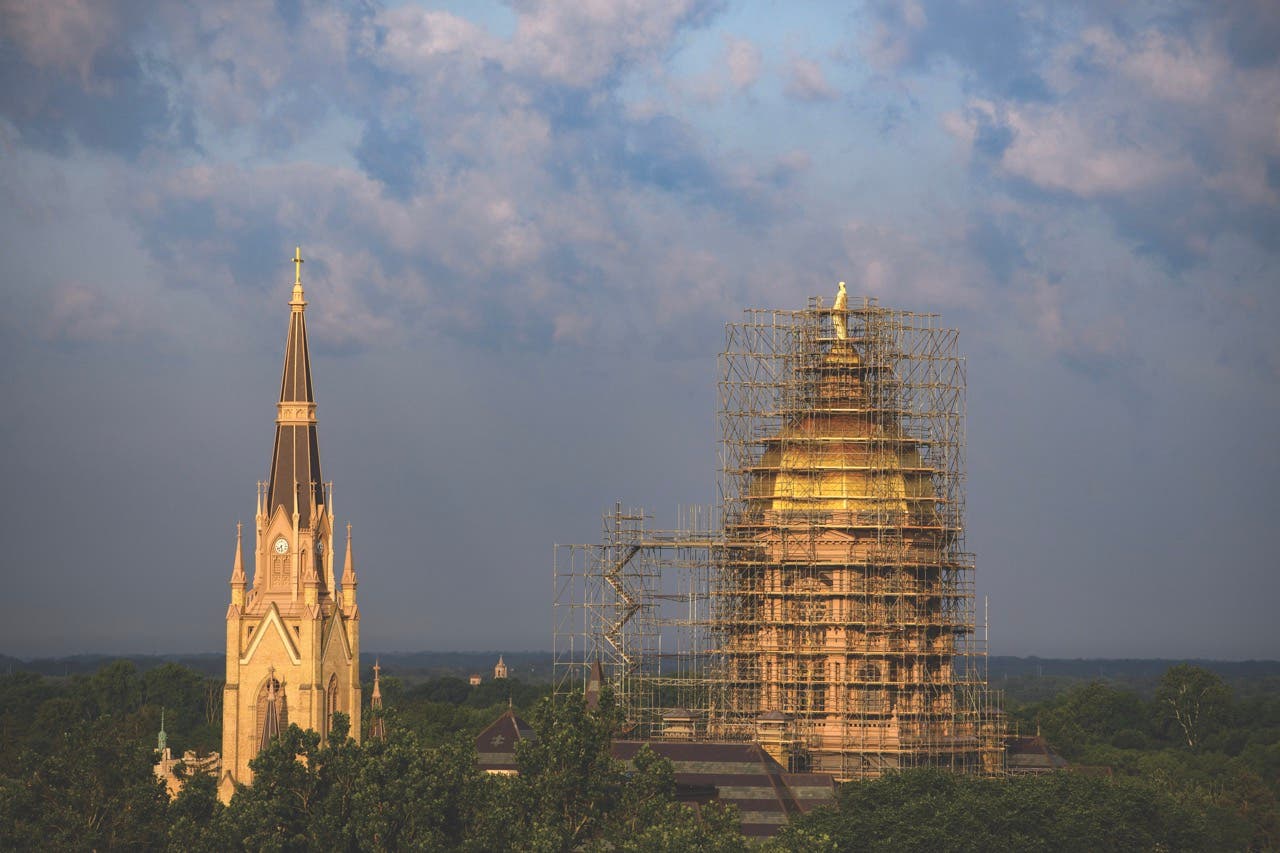
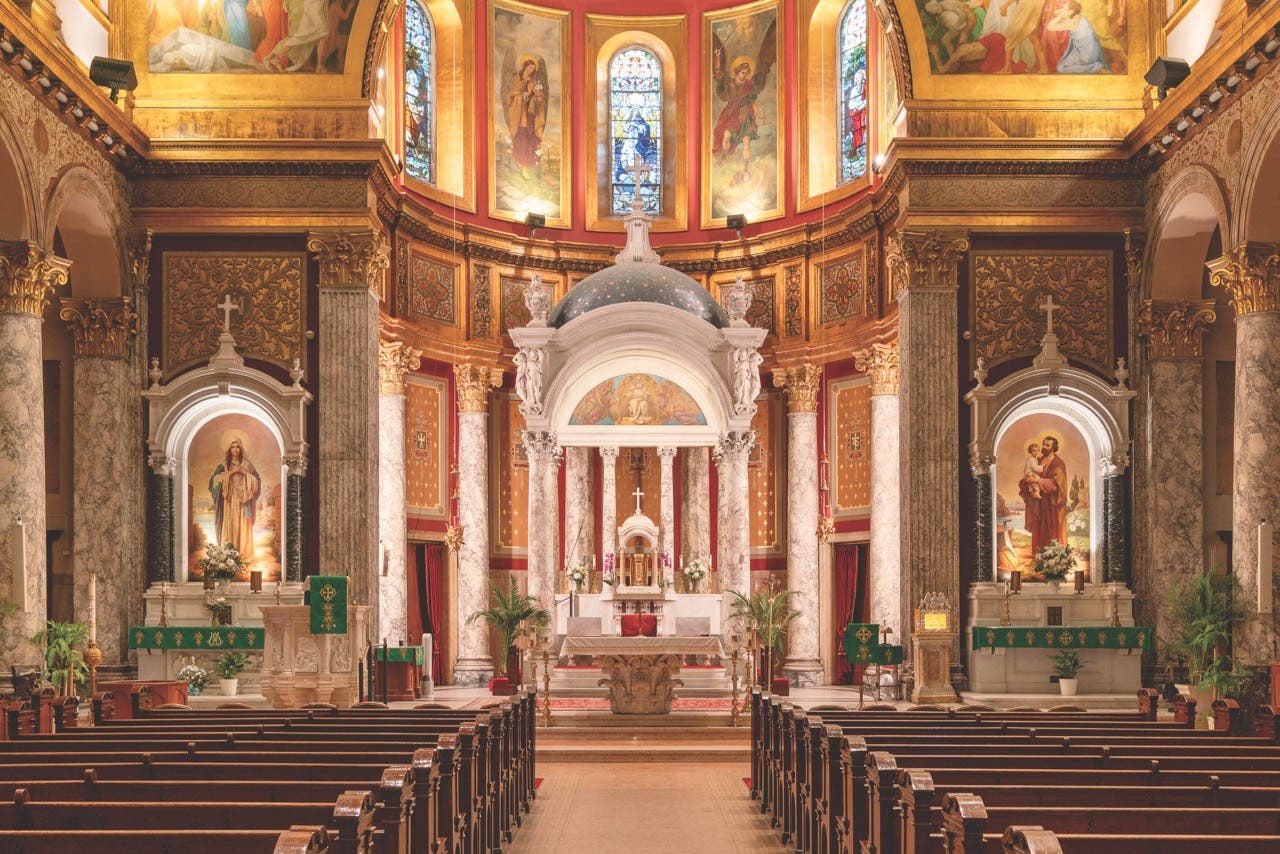
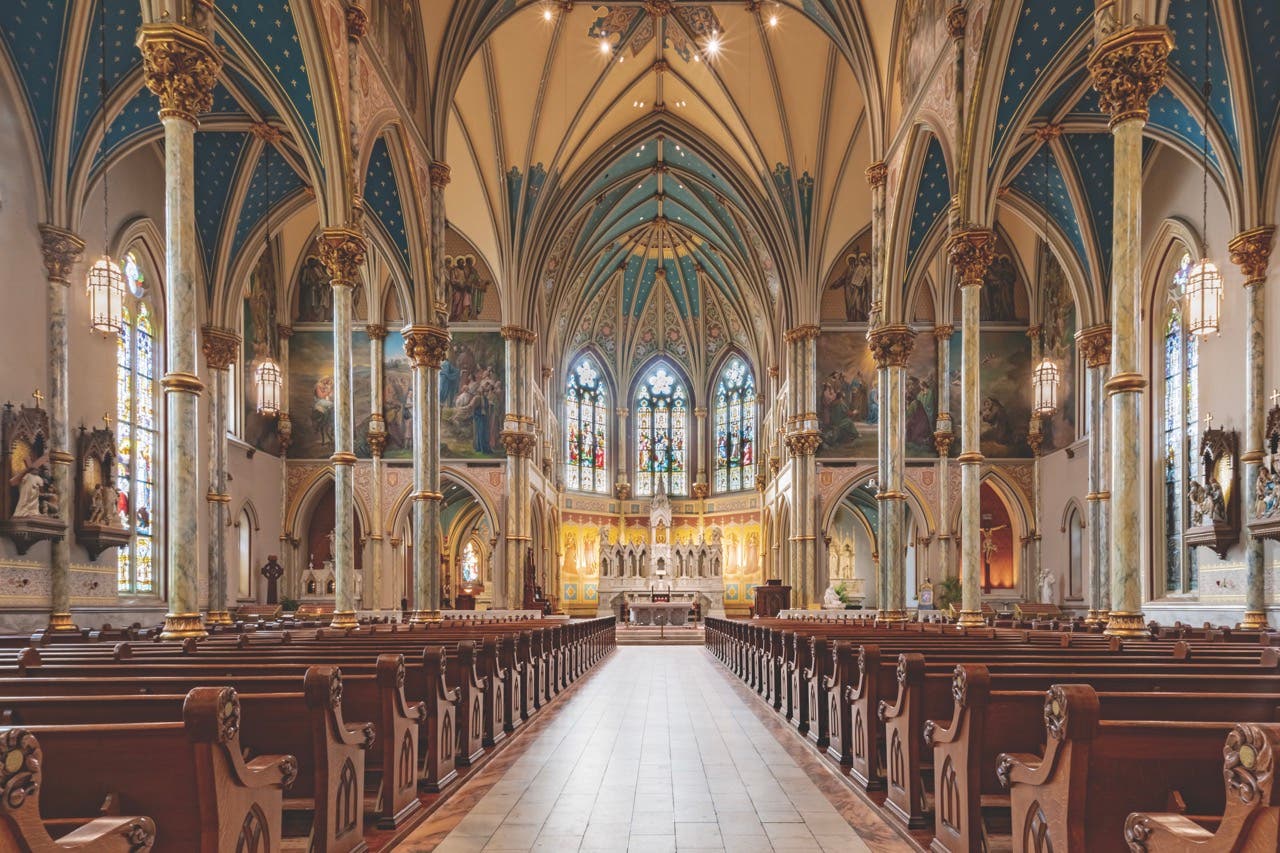
Using historic techniques combined with new equipment and more modern and safer and durable materials, the company, which is based in Wisconsin, replicates historic decorative schemes or creates new decoration that employs elements existing in the architecture.
“In general, we want the decoration to mean something and tell a story not to be purely aesthetic,” says vice president Heidi Gruenke Emery, whose grandfather, Bernard O. Gruenke, bought the company from the original owner’s estate in 1953. “Our sources include motifs based on symbols for the patron saint if the space is a church, or the style of a historic theater, for example.”
This is evident in the firm’s projects, the most recent of which include the gilding of the golden dome at Notre Dame; the interior decoration for St. Bernadette Catholic Church in Scottsdale, Arizona; the restoration and preservation of the sanctuary at Saint Mary of the Lake Catholic Church in Chicago; the restoration of the stained glass at Normal Hall Dome at Indiana State University in Terre Haute; and the decorative paint conservation at the Masonic Temple in Detroit.
Conrad Schmitt, which has created relationships with clients that span decades, is a full-service studio that does everything from developing master plans and creating renderings to, as Emery says, “helping to ignite the spark that will assist in creating enthusiasm and funding for the project.”
It’s an honor, Emery says, to work on spaces that are “an intrinsic part of our history and contain craftsmanship and house artwork that is not replicated in our modern world.”
The satisfaction, she adds, comes from “working with a community to rally around the restoration of their beloved historic movie theater that breathes new life into a downtown, or rejuvenating a church that will be a place in which parishioners can baptize their children and remember their loved ones.”
EverGreene Architectural Arts
The largest U.S. specialty contractor that’s focused on the preservation of historic buildings, artifacts, and works of art, EverGreene Architectural Arts’ gamut of specialties includes gilding, glazing, faux finishes, architectural textiles, painting, and plastering.

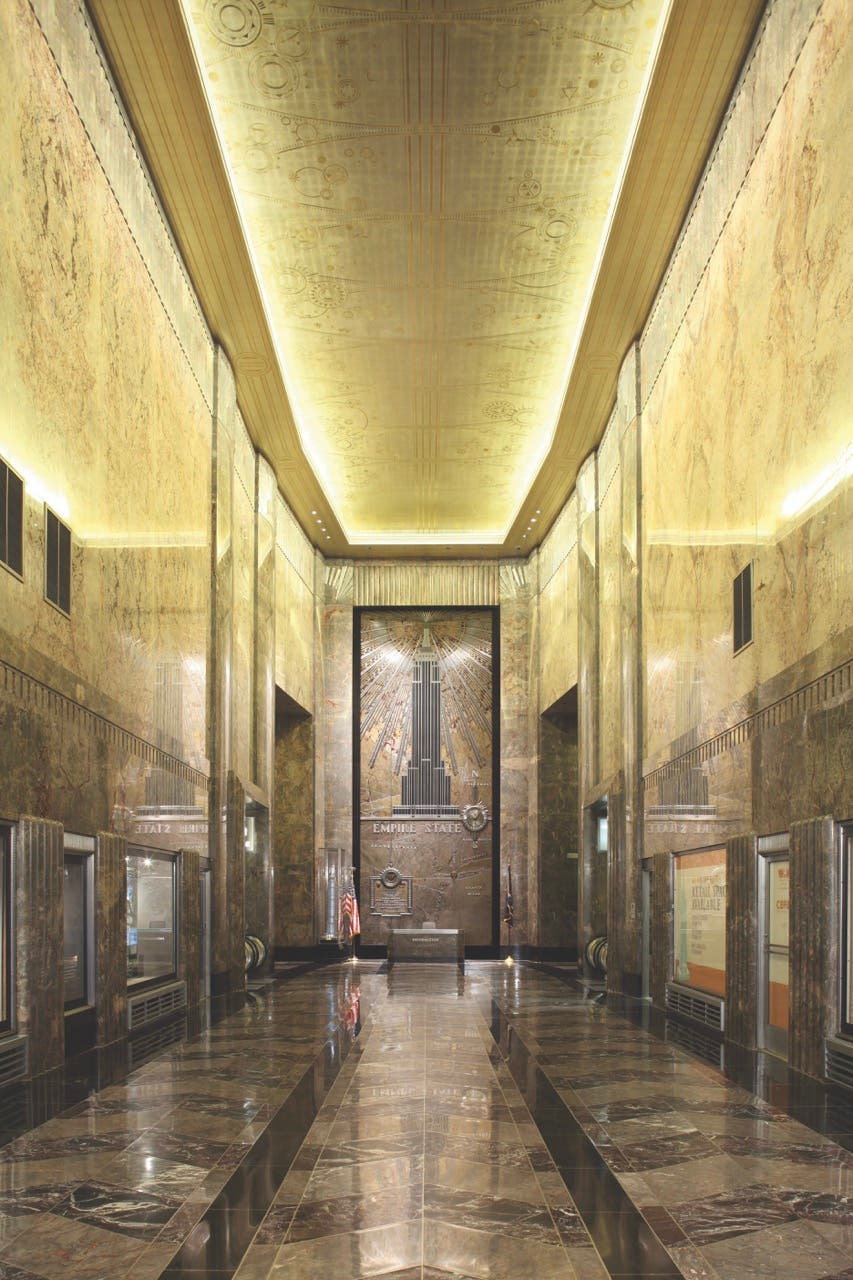
Since its founding by mural artist Jeff Greene in 1978, the company has worked in many of the nation’s most iconic public spaces, including the Empire State Building and the U.S. Capitol, and has completed 400 theaters and hundreds of sacred spaces across the country.
EverGreene uses a variety of innovative high-tech tools. Lasers clean conservation work, digital documentation systems such as photogrammetry and Lidar laser scanners create high-definition anamorphic 3D perspectives, drones conduct external site assessments, and 360 cameras document interior spaces.
In the design studio, digital plotters are used to create large-scale printing prototypes for repeat patterns with input from the mural studio.
“These modern technologies are complemented by further combining traditional hand drawings and sketches and unique mold-making visual effects, empowering us to achieve higher standards than most in the industry,” says Creative Director Alan Carroll.
Projects typically start with a hand-drawn black-and-white concept sketch to which details and color are added. From this, a contextual rendering that entails superimposing the designs onto photos, architectural elevations, or even a 3D model or scan of the space is made.
The work, Carroll says, “is a chance to be a small part of history. The idea that we’re part of a lineage excites us. There’s a line of artisans and craftspeople going back centuries who’ve contributed to our grandest cultural statements—our libraries, sacred spaces, universities, state capitols, and monuments—and who’ve provided a visual touchstone that tells the story of what it means to be us. It’s a responsibility that we don’t take lightly.”
John Canning & Co.
Using traditional materials and old-world techniques, John Canning & Co. has preserved, conserved, restored, and recreated original decoration and artworks for nearly every significant historic building around the country.
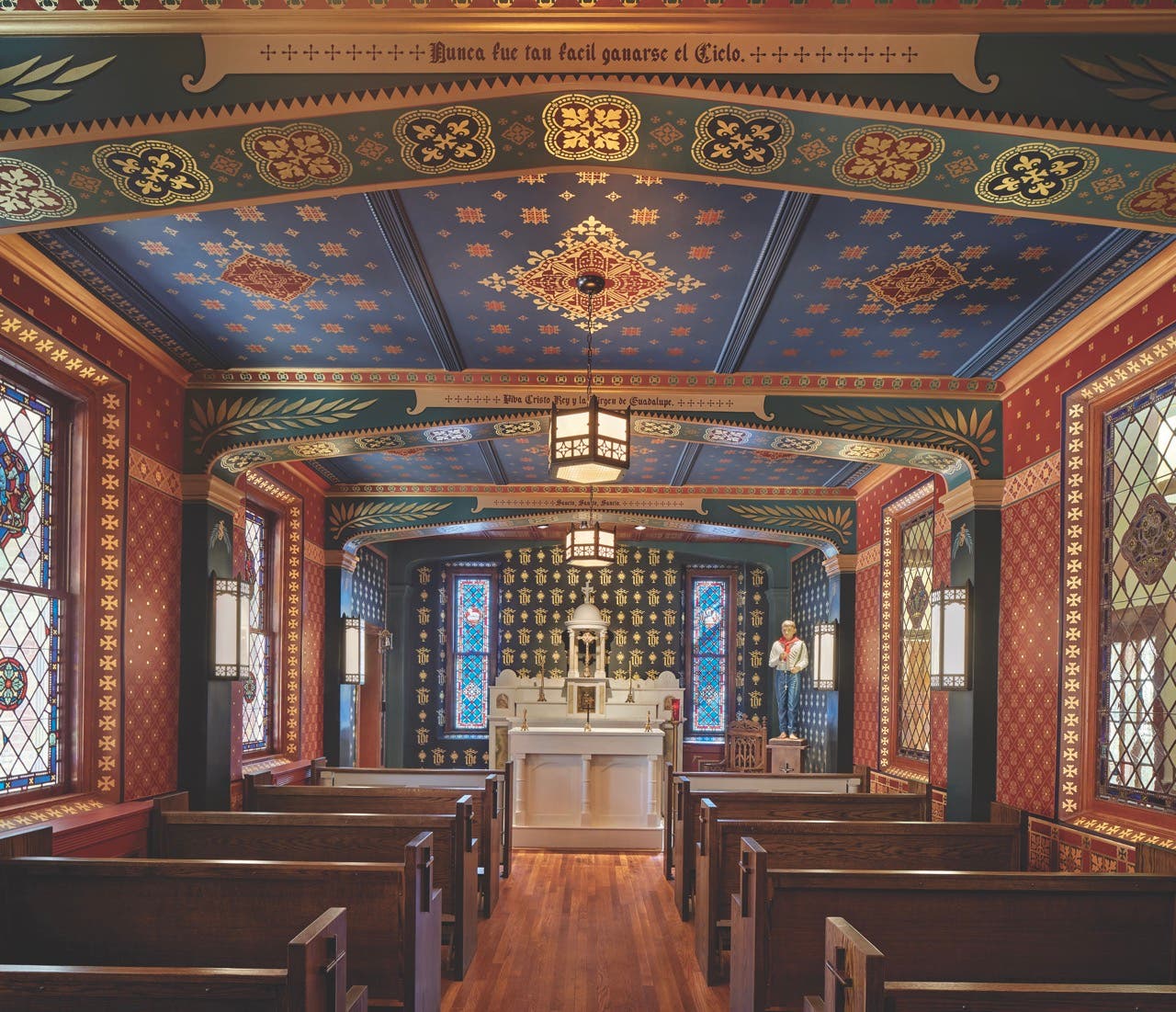
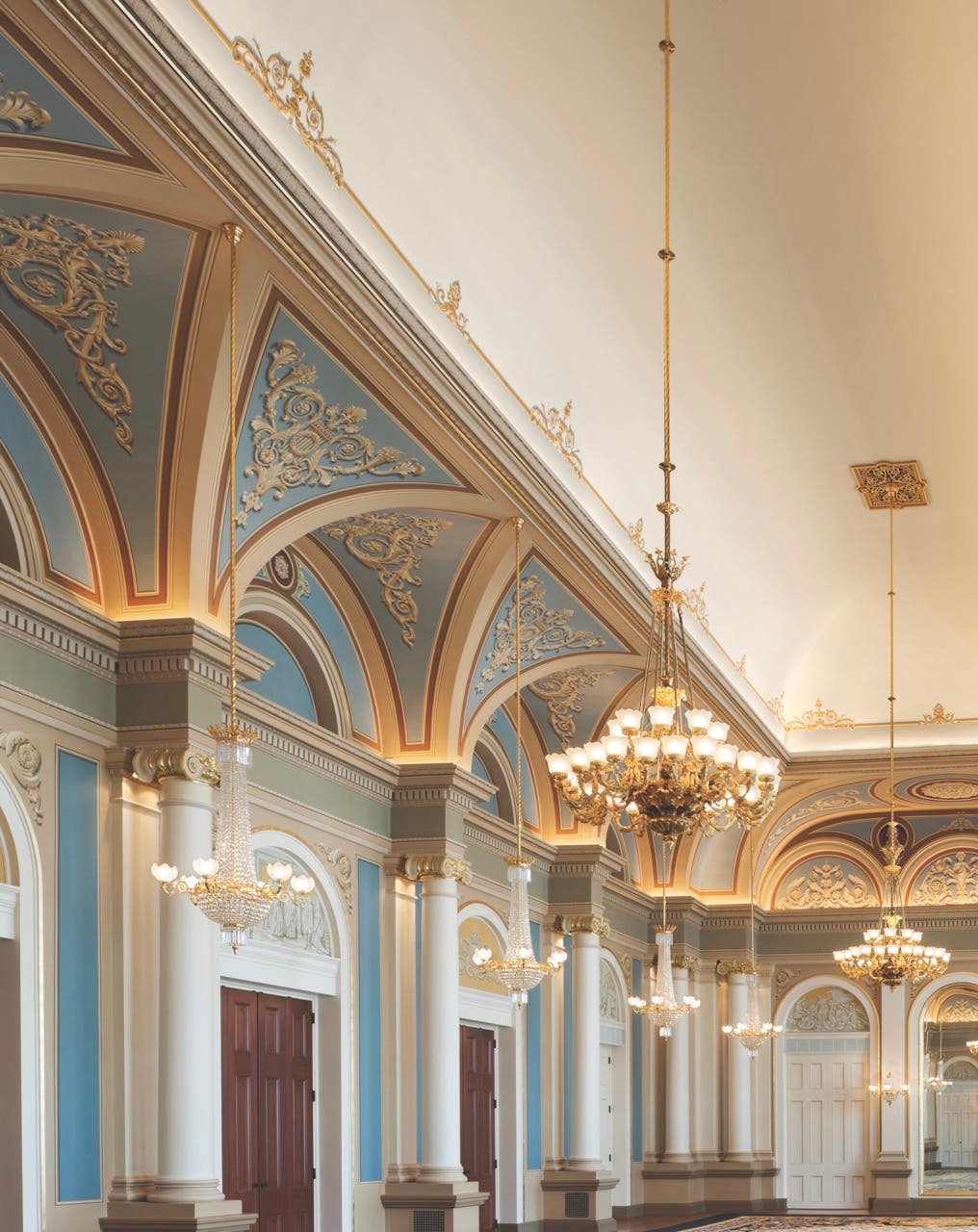
Specialties of the pre-eminent Connecticut-based firm include complex stenciling, illusionistic painting such as trompe-l’oeil, glazing, marbleizing, and faux bois.
The award-winning family-owned and -operated company, which was established over 45 years ago by the master craftsman whose name it bears, also designs and paints new decoration and artwork, working in the established style or time period to blend into the existing spaces.
“Our studio has the unique practical understanding and ability to use materials and techniques employed from the Renaissance through to today,” says President David Riccio. “This broad spectrum of artisanship uniquely positions us in the preservation field throughout North America. We pride ourselves on educating and training artisans to take this craft solidly into the future.”
The company’s scope of work includes consulting, pre-construction, project management, construction, and new design.
Typically, John Canning & Co. conducts archival research, then produces sketches, color renderings that contemplate proposed furnishings and fabrics, and makes mockups, which may be full scale and in situ.
“Decorative painting can transform a space not just with the beauty it adds, but also the decoration and art can also provide inspiration and education to all who pass through the building while displaying its history,” Riccio says.
Noting that John Canning & Co.’s inspiration comes from history’s great designers, including John Ruskin, Owen Jones, Louis Comfort Tiffany, and Herter Brothers, Riccio says that “we prescribe to Owen Jones’s Proposition No. 1—the Decorative Arts arise from, and should be properly attended upon, Architecture.” This guides us in our pursuit of perfection preservation.
Swiatek Studios

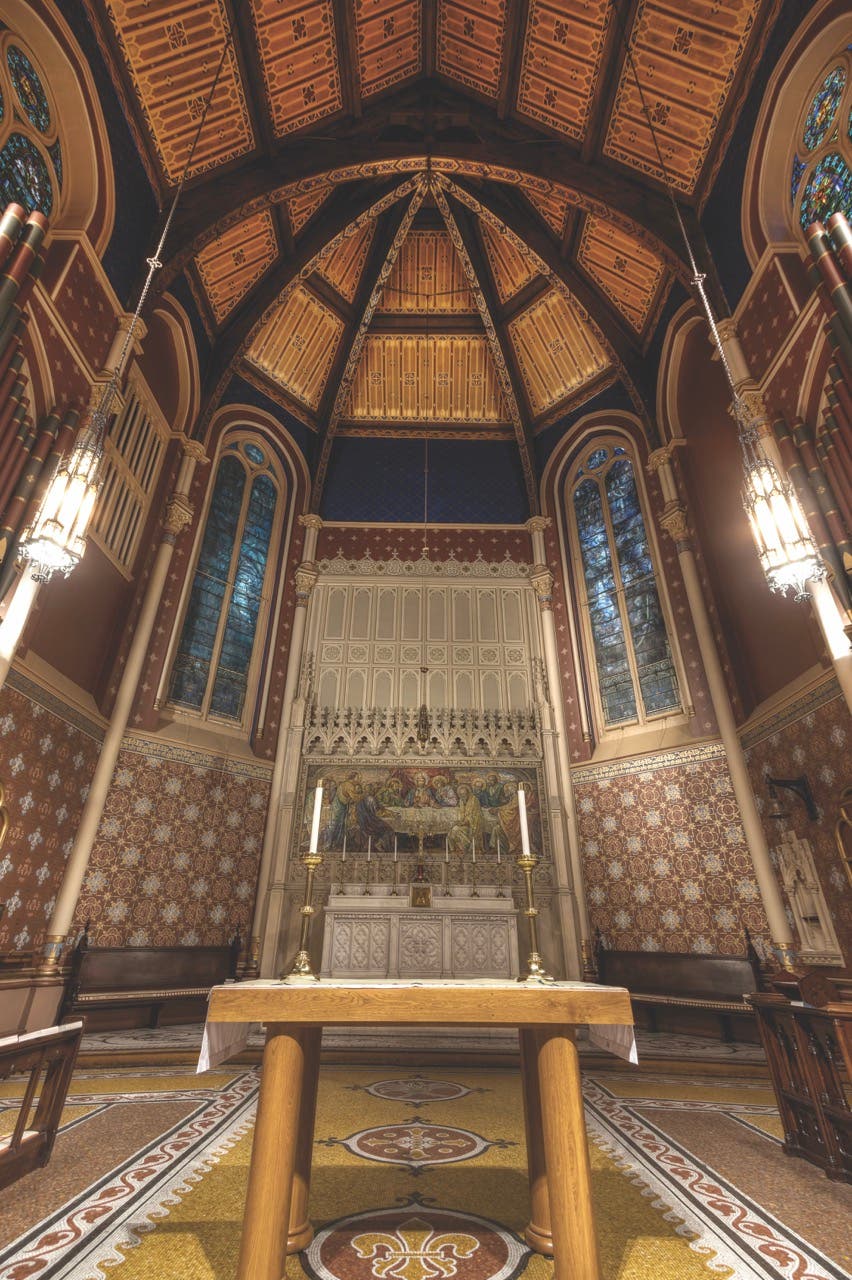
A family-opened and -operated company, Swiatek Studios specializes in stenciling, gilding, glazed finishes, faux bois, marbleizing, murals, and Venetian plaster for projects ranging from small repairs in private residences to major work in large cathedrals.
“Many of our designs are inspired from historic works of art found within churches, museums, and residences around the world,” says Brett D. Swiatek, the third generation of his family to own the company, which was founded in 1967. “Additionally, our inspiration is also derived from our hometown of Buffalo, New York, which is rich in architectural and historical art and has had a profound impact on our application and design of decorative finishes.”
The studio’s craftsmanship is illustrated in a number of high-profile projects. The ceiling coffers in the main gallery at the Buffalo AKG Art Museum are adorned with 112 22-karat gold stars that Swiatek applied with a dry brush blue gradation. The intricate moldings in the proscenium arch at Shea’s Performing Arts Center in Buffalo have glazing applied by Swiatek in more than 20 hues with mica powder; and the grand stair and crown moldings at The Richardson Hotel were faux grained to mimic mahogany by Swiatek, which also reproduced original stencil work.
Projects, a collaboration between studio and client, typically start with the study and research of the original space. Using computer software, the studio creates 3-D models and renderings then uses technical color analysis and window exposures to identify specific colors and patterns to create an accurate description of the project. Swiatek creates a full life-size sample for final approval before installation.
“The use of visual renderings and the use of the Internet have allowed us to explore a limitless number of design ideas, but our restoration applications have remained true to historic technique,” Swiatek says. TB







